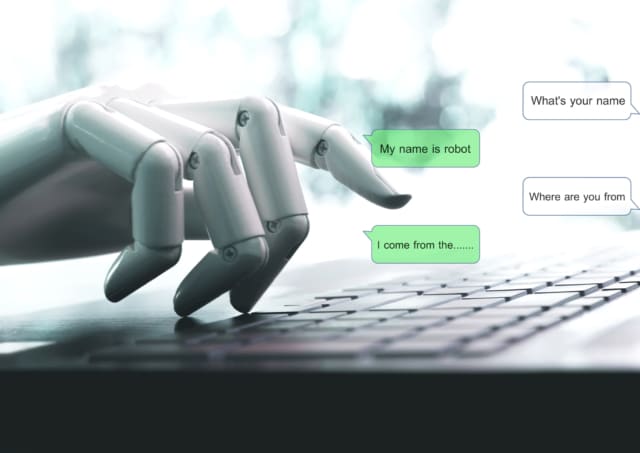Live chat and chatbot features are now commonplace across the web. These chat systems are both great options for facilitating rapid, contactless, customer service and customer support. Taking communications online takes a tremendous amount of strain off business contact centres.
Leveraging chat technology effectively can, therefore help businesses save money, save resources, and boost conversions. But, as yet, there is no all-encompassing solution to text-based customer communications. Live chat offers the human touch. Bots boast speed.
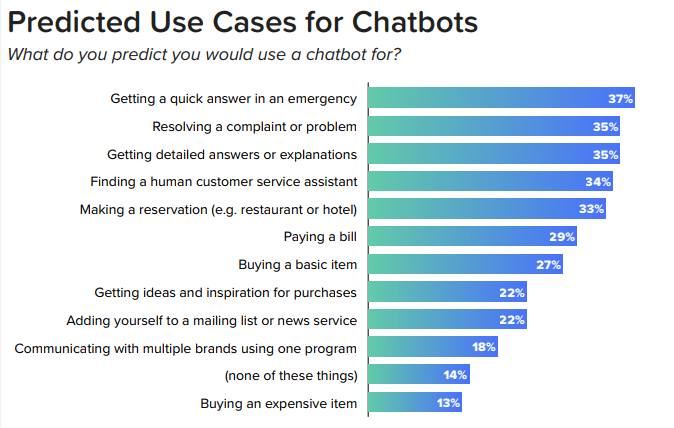
Did you know? By 2021, 47% of organisations are expected to start implementing chatbot solutions for their customer services. And the growth of chatbot technology is not slowing down anytime soon. It is predicted that the worldwide market size for chatbot technology will exceed $1.3 billion by 2024.
As customers get used to these conveniences (41% now expect live chat options), both chatbots and live chat software are great options for your business. But which one should you pick? Human-centred live chat or automated chatbot technology?
To help you out, we’ve put together a go-to guide on all things digital communication. So, let’s get cracking.
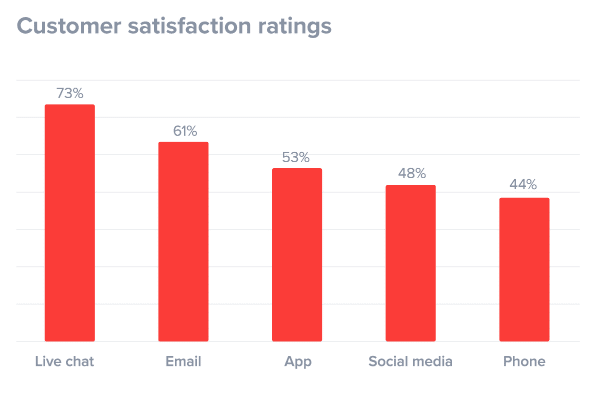
Image by REVE
What is a Chatbot?
Chatbots are becoming increasingly popular as we continue to make strides in artificial intelligence technology. A Chatbot is a tool used to communicate with customers online via computer-generated responses.
Businesses and customers interact online across a chat interface, and AI software will review and answer customer questions. The idea is to overcome human limitations and speed up customer care.
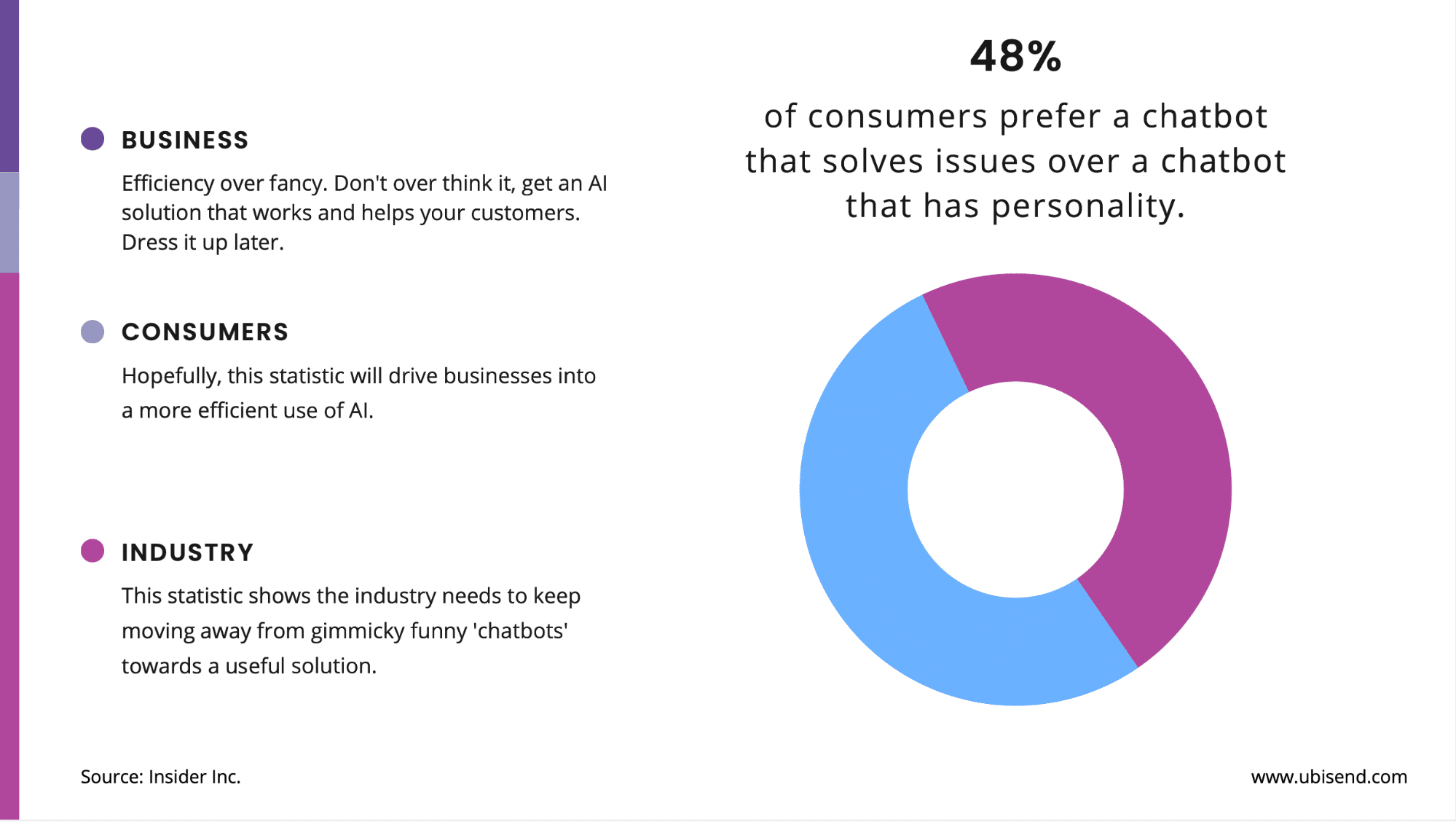
Image by Ubisend
Chatbots aren’t perfect yet, but they’re well on their way to becoming sophisticated customer service tools. Some newer chatbot software has the capability for efficient, intelligent responses beyond the limited response library associated with chatbots of the past.
In their current form, most bots function well as mechanisms to answer straightforward, frequently asked questions. Customers can now receive instant answers to common questions about product features, prices, and delivery. But rapid improvement promises a future in which bots boast much more complex capabilities.
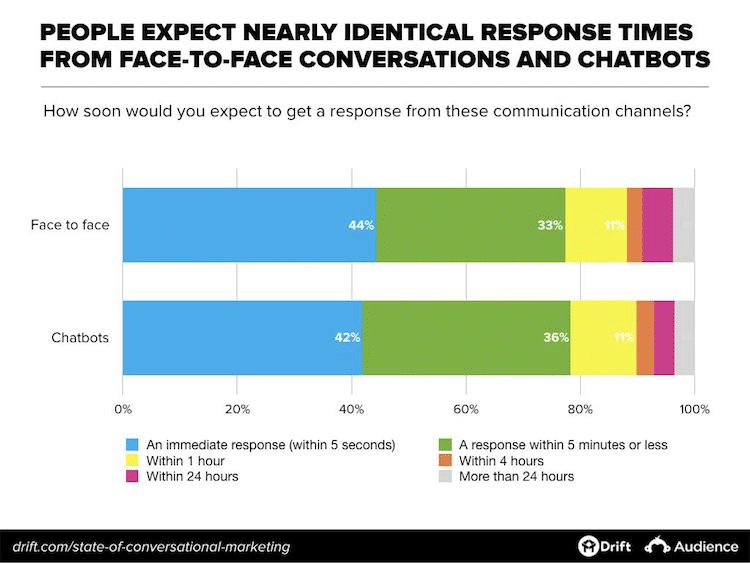
Image by SalesForce
Chatbots free up the customer care team to use their time productively. Customers and service reps no longer have to waste time on calls about simple, easy-to-answer questions. What’s more, as an automated service, a chatbot is available 24/7 – a great feature for online shoppers!
But chatbots are not perfect. They lack room for personalisation. Only the most advanced bots can hold life-like conversations, and most are limited in their response settings. Either way, bots are facilitating conversational marketing trends, and customers seem to love it.
In fact, 57% of consumers in the United Kingdom now know what a chatbot is, and the global market size for chatbots is expected to reach $1.25 billion by 2025. Customer service is well on its way to becoming a perfect combination of automation and human interaction.
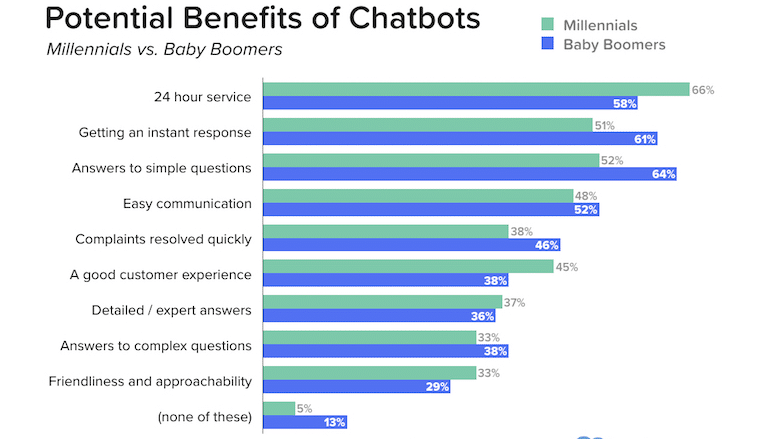
Image by REVE Chart
What is Live Chat?
So, what is live chat, and how does it work? Chatbots and live chats share a similar purpose, but function very differently. Live chats make up for the personalisation lost when relying on chatbots. That’s because real customer service agents man lives chat interfaces.
Prospective customers ask a question, and a member of the service team will reply to them via chat when available. When there’s no agent available, customers are invited to leave an email address and will receive a response at a later date or time.
RingCentral’s live chat features help clients know where their customers are coming from by facilitating easy, direct communications. Customisable chat windows help brands make their live chat interface unique and memorable, and behavioural targeting means agents can strike up conversations with their customers just at the right moment.
Live chat is the most effective text-based communication method for getting to the heart of your customer’s needs. A real person can understand where their customers are coming from and strike up conversations at just the right moment. That’s why many believe live chat provides unbeatable customer service.
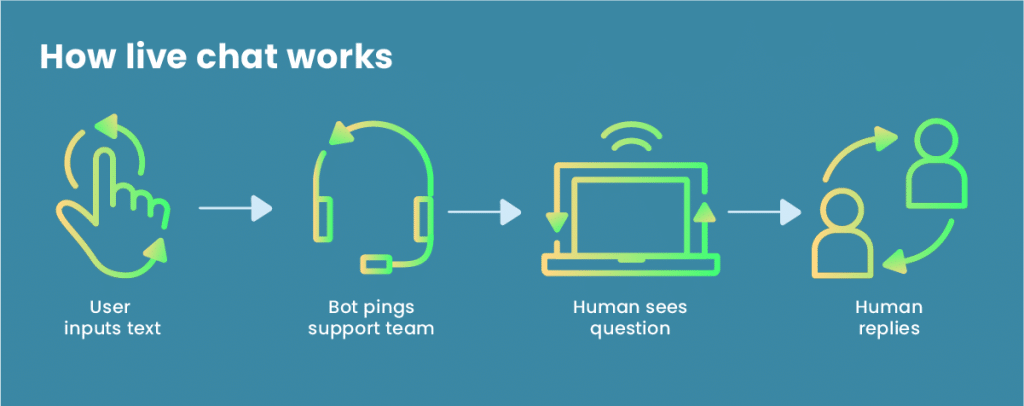
Image by ManyChat
But for a living chat to be useful, businesses must not ignore customers when they reach out. Did you know that 21% of live chat support requests go ignored? That’s a sure-fire way to lose customer loyalty. Some customers trust live chat more than bots. So make sure you’re there for them.
Live chat boasts many options for personalisation, but it is sometimes harder to guarantee instant responses. To avoid customers becoming frustrated by delayed response times, it’s important to make sure live chat channels are manned as efficiently and comprehensively across multiple time zones. Alternatively, they can be paired with a chatbot to ensure some online support is always available.
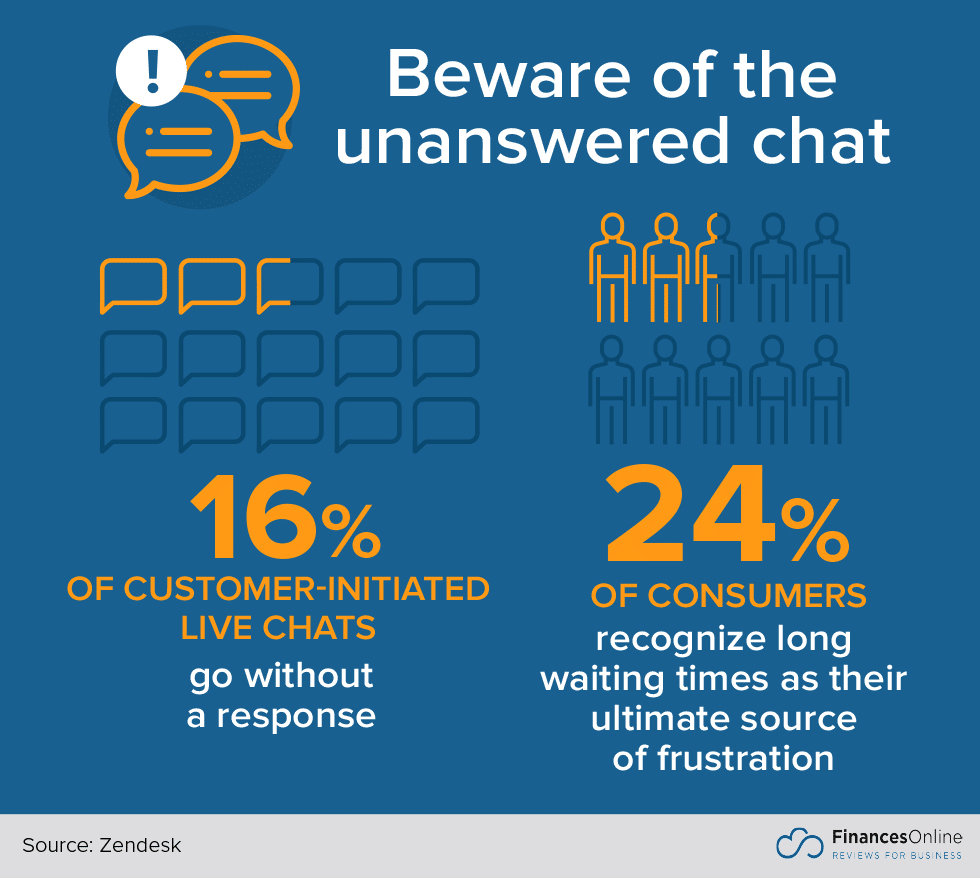
Image by FinancesOnline.com
Why chatbots and live chat are a great match
More and more businesses are mobilising chatbots alongside live chat and other communications tools to keep customer care running smoothly and rapidly.
RingCentral helps businesses build stronger relationships with their customers using omnichannel customer engagement platforms. Businesses can cover social media, messaging, live chat, and email, all in one place, making customer care as easy as talking to a friend.
The benefits associated with using chatbots as part of an omnichannel customer engagement strategy are many. Let’s take a look at some of their best features.
-
Chatbots can operate without human supervision.
Bots do not require the labour of a human employee. Chatbots operate without human help. That saves businesses time, money, and resources. Existing employees can focus on more pressing tasks. Bots liberate time so that it can be dedicated to complex customer enquiries.
-
Multitasking
Chatbots are pretty smart. They can do an awful lot at once. Chatbot software attends to hundreds of customers simultaneously. Once again, this frees up your human employees to deal with technical queries or questions that bots might end up redirecting to in-house staff.
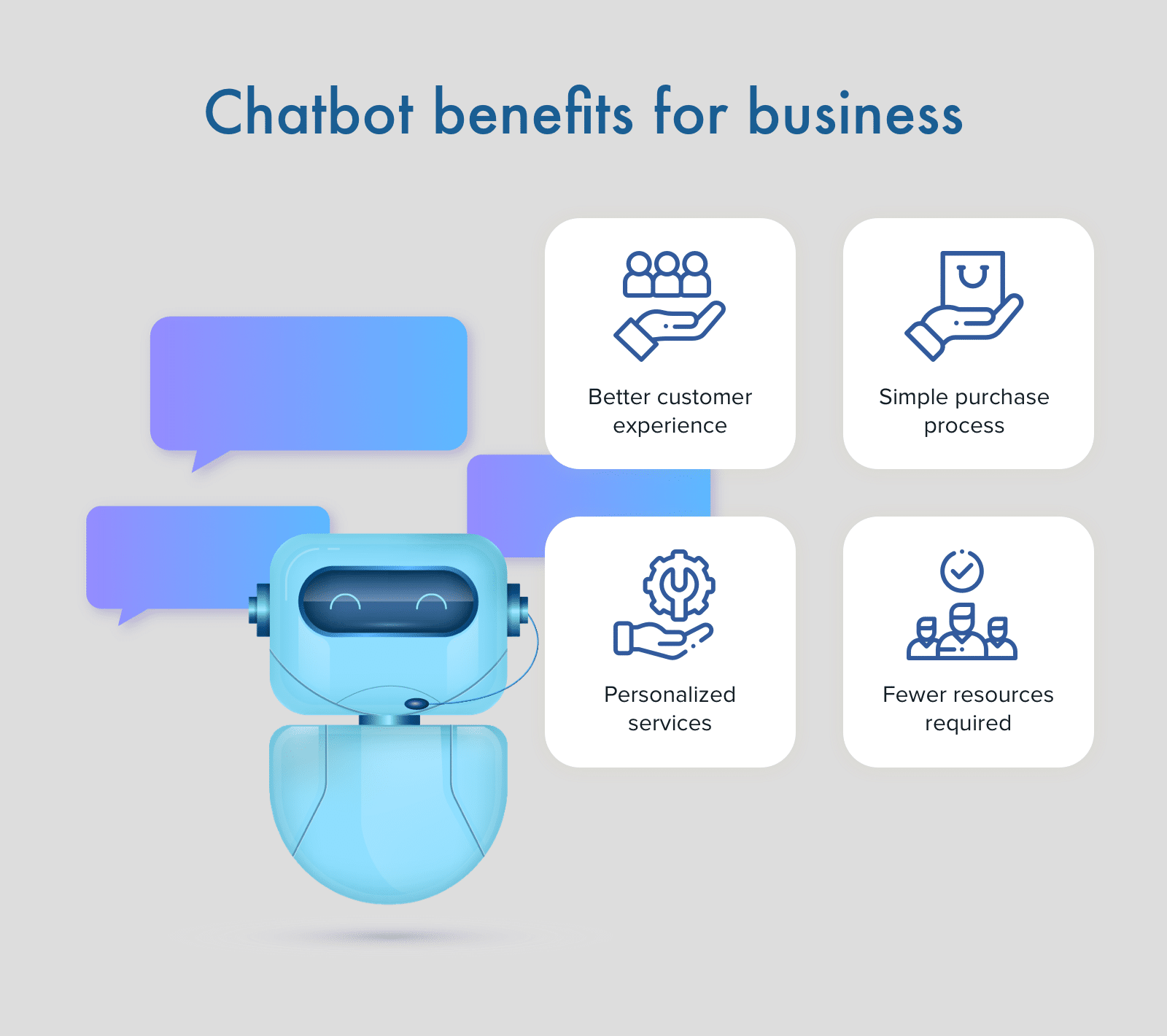
Image by Chatbots Journal
-
Response time
This is a biggie. Bots are incredibly efficient. As such, customer experience can improve exponentially as multiple customers get live, real-time solutions to their questions at the same time. Bots can become the go-to option for simple queries, meaning customers don’t have to wait to meet their basic needs.
-
Ease of use
Chatbots are simple to set-up and use alongside your existing live chat software. Everything from customer-bot interactions to training your bot takes place on a unified interface.
-
Availability
Customers still value human interaction, but humans cannot be expected to operate live chat services 24 hours a day. Likewise, hiring enough employees to keep your live chat lines permanently open would be costly. Mobilising a bot to fill in, out of hours, could be the answer.
Bots do not require human operators and, as such, can be mobilised 24/7. Chatbots stay online for as long as you want them to, making customer care available to clients at any time, anywhere. This can help you hold on to precious customers, especially those who might be living in different time-zones and promote brand loyalty.
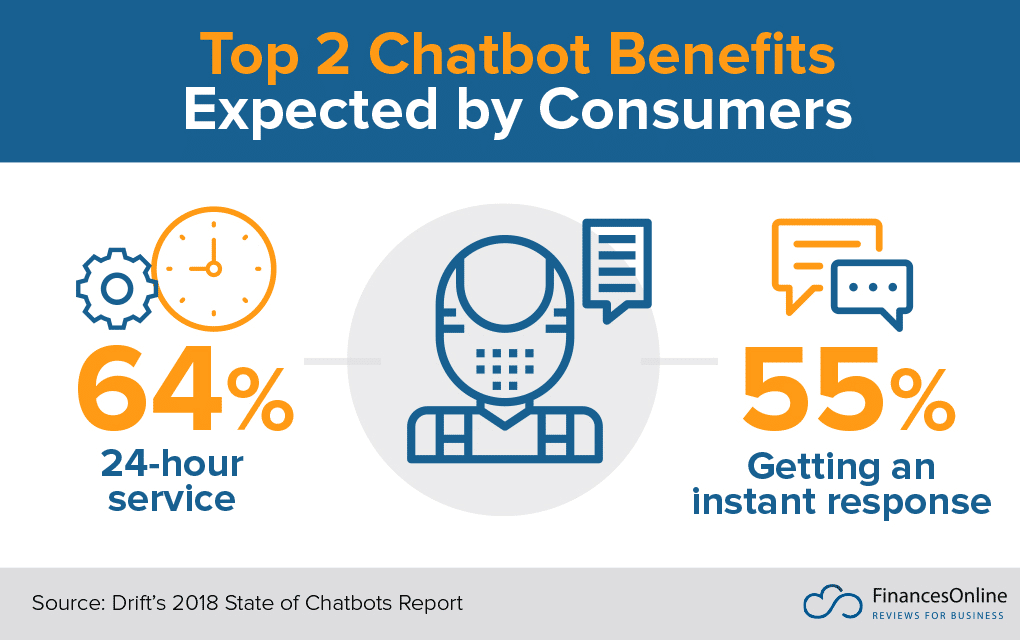
Image by FinancesOnline.com
-
Cost efficiency
Bots lower costs. Full stop. For businesses with a fair amount of online footfall, chatbots are a financially sound way to prevent customer care traffic-jams, particularly at times of high demand around the holidays. After the upfront installation fee, bots will service thousands of customers. When paired with live chat services, this can keep customer communications running smoothly.
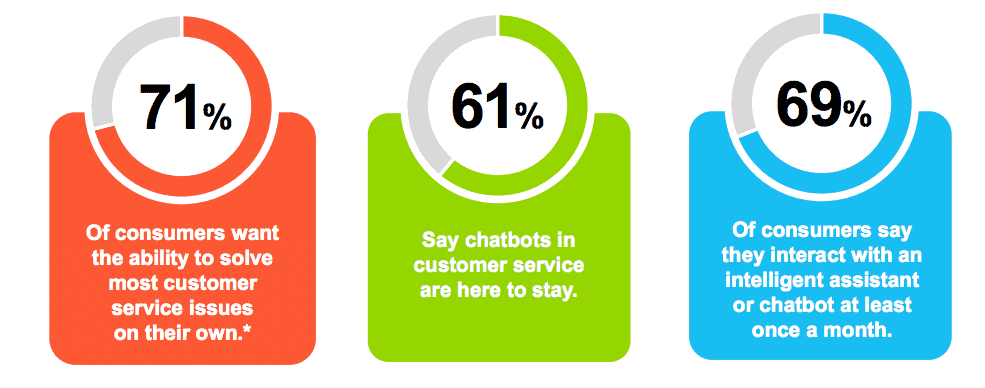
Image by EngageBay
Summary: Chatbot Pros and Cons
We are painting a rosy picture of chatbots here. And rightly so. Chatbot software is beneficial and cost-effective. But before putting all your business eggs in one basket, it’s sensible to weigh up the pros and cons. Let’s dissect all things chatbot: the good and the bad.
Chatbots: the pros
- Chatbot software carries out customer interactions efficiently to offer quick answers.
- 99% improvement in resolution times.
- Chatbot software is beneficial for answering simple FAQs.
- Chatbots are set to become more sophisticated.
- Newer chatbots pair conversational data with website visitors’ profiles for customisation.
- Newer chatbots are driven by AI and can handle complex issues.
- Chatbots can handle thousands of chats simultaneously.
- Chatbots can speak in multiple languages.
Chatbots: the cons
- Chatbots can often only process a pre-programmed knowledge base.
- Many chatbots are only able to answer simple, specific questions.
- It can take weeks to train up your chatbot.
- Chatbots lack personalisation and the human touch.
- Older chatbots can be thrown off by a simple spelling mistake.
- In 71% of cases, a chatbot does not solve a user problem.
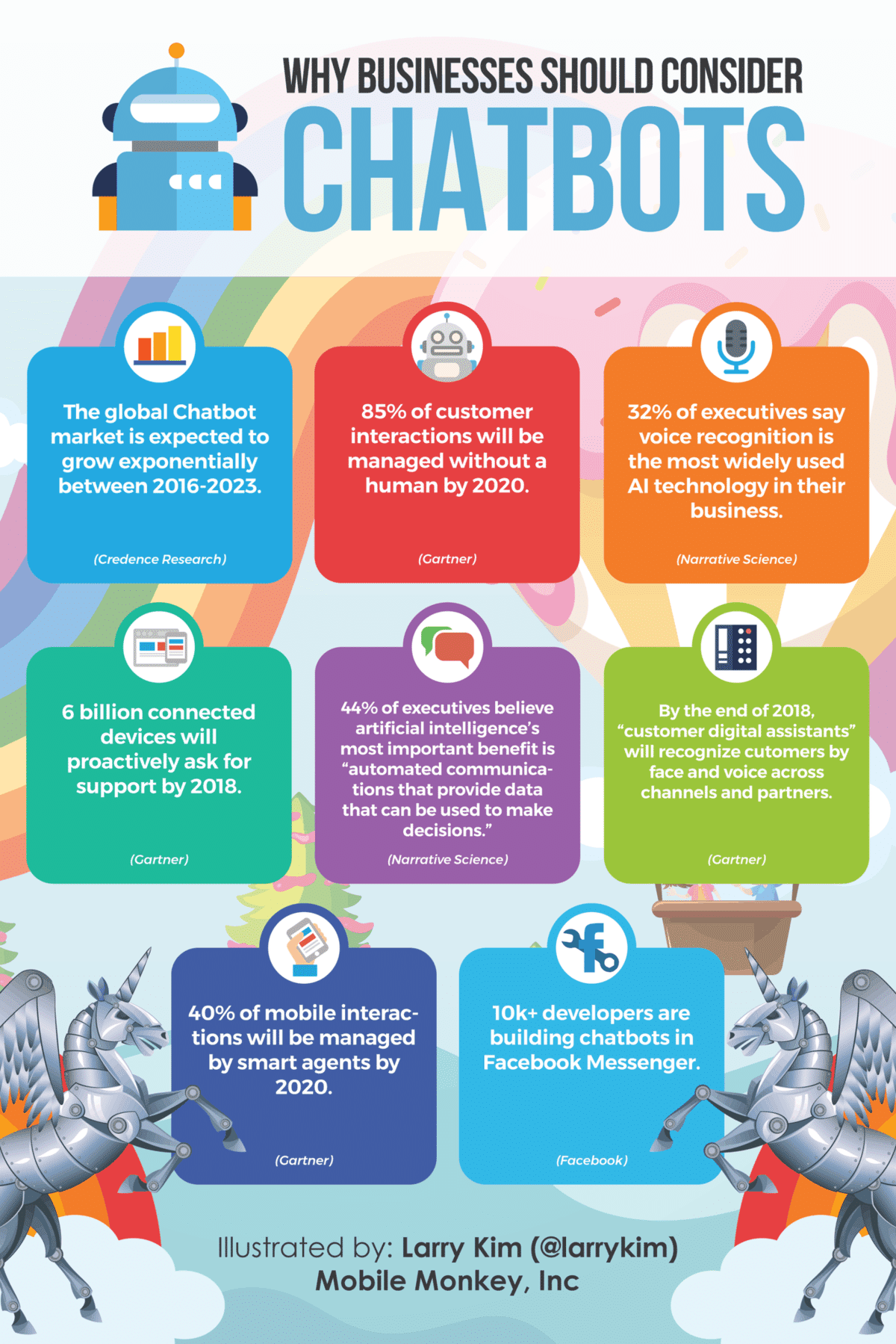
Image by MobileMonkey
Summary: Live Chat Pros and Cons
Live chat customer service may be more labour-intensive, but there’s a reason why some businesses still prefer to maintain these services. Interactive content is essential for customer engagement and customer retention. Live chats benefit from the human touch. They offer nuanced interactions between agents and customers.
Live chat: the pros
- Interactions are carried out by a real human rep who can respond contextually.
- Live chat can handle complex, and technical, customer queries.
- Human intervention means conversations are more likely to end in resolution.
- Personalised service with human touch and empathy.
- Easy to scale up conversations to voice, video, and /or co-browsing sessions.
- Reduces wait times.
- Increases conversions.
Live chat: the cons
- Live chats cannot track customer information in the same way as AI.
- Live chats cannot handle multiple chats simultaneously.
- Live chats can’t be kept open 24/7.
- Live chat is wasted on simple, repetitive FAQs.
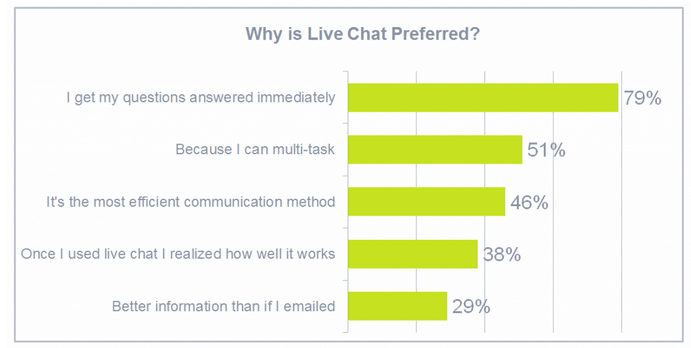
Image by REVE Chart
What the Future Looks Like for Live Chat and Chatbots
The future for live chat and chatbots, alike, looks bright. Online customer communications are here to stay, and many businesses are opting for a combination of the two options to mobilise their best features. It seems a blend of bot and human is the way to go.
Together chatbots and live chat offer some essential features. Businesses need the efficiency of a bot as well as the human touch offered by live chat services. In other words, bots should not be treated as a one-size-fits-all solution, freeing you of customer service responsibility.
AI-powered bots are set to take centre stage as fantastic tools to support customer care whilst saving time, money, and resources. And that’s not all. Soon we could be looking at intelligent technologies that transcend text-based communication altogether. We might be looking at:
- Voice support through natural language processing capabilities.
- Augmented reality (AR) for customer demos.
- 3D holograms for multi-sensory customer service.
- Multichannel, immersive, customer experiences.
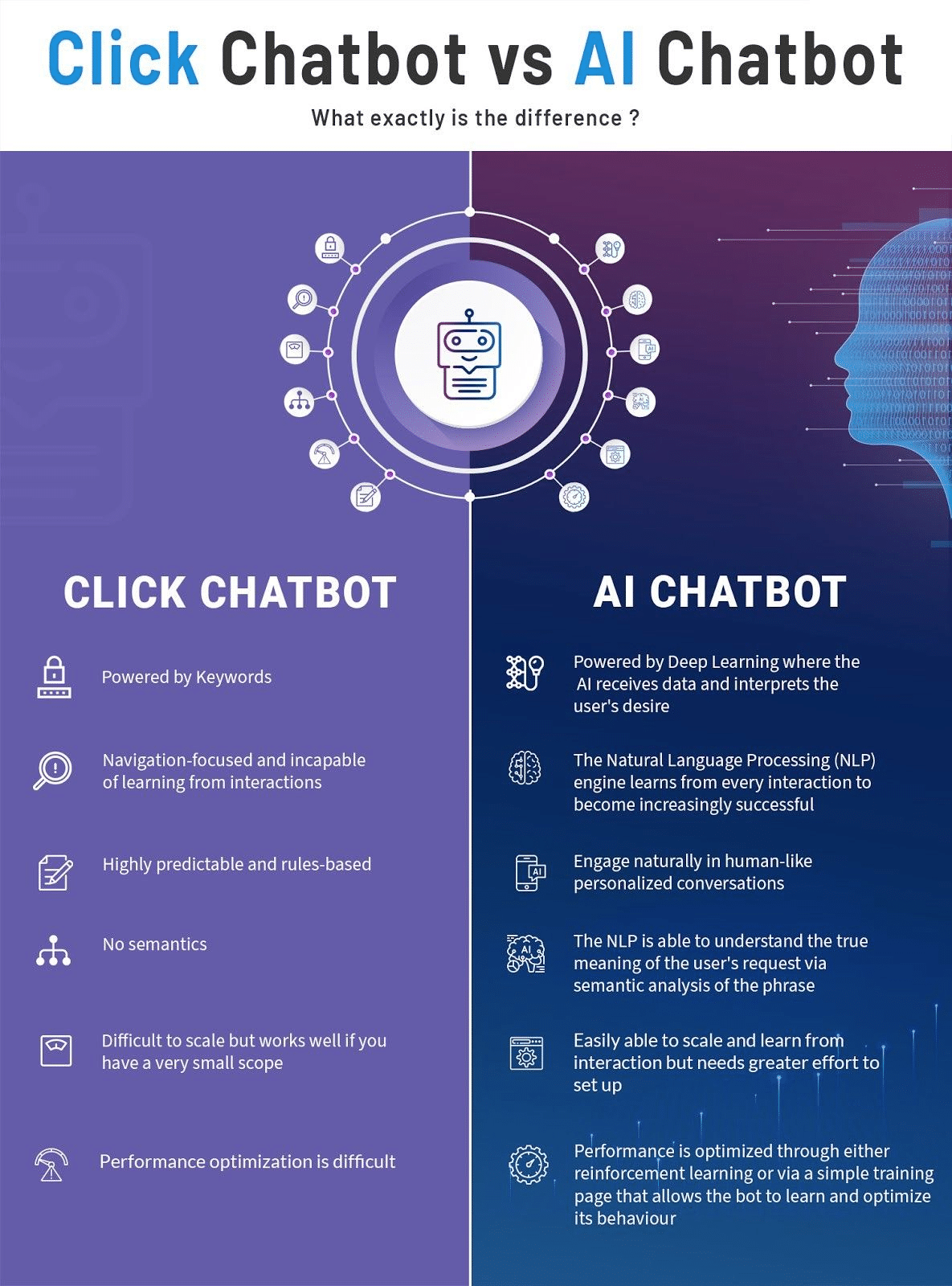
Image by Medium.com
Possible new features to look out for include automated chatbot payments over social media. That means payments directly via Facebook Messenger or other applications. It’s possible that bots might enter the industry, as well. Chatbots are already being developed for internal use by enterprises.
Soon, chatbots could facilitate the work of Human Resources teams on basic transactional functions and keep in contact with teams and employees easily. We might even see bots being used for employee onboarding and as part of internal help desk administration.
Wherever technology takes us in the future, one thing is clear. Customer service automation is becoming an industry mainstay, and 2020 has only accelerated this trend. Since the pandemic, remote working is seeing more and more employees working from anywhere.
Customer service automation is key to facilitating a long-term, remote-working culture. Customer service departments and contact centres are changing rapidly. An automated, self-service strategy improves omnichannel experiences and boosts customer satisfaction.
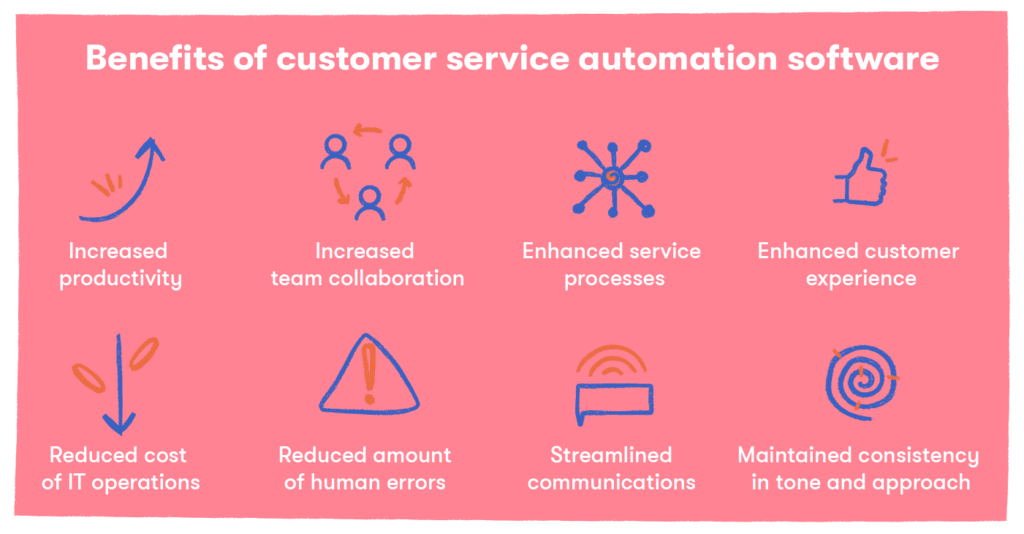
Image by Groove HQ
Grab a Bit of Both
So, which chat solution is best for you?
As it stands, the overwhelming advice is to grab a bit of both. That means businesses will be best covered by mobilising both chatbot and live chat software in tandem. That way, they benefit from human-to-human precision communications, as well as a bot’s efficient management of FAQs.
The hybrid approach offers both worlds’ best and mitigates the disadvantages associated with each software option in isolation. What’s more, as AI chatbot technology continues to become increasingly intelligent and sophisticated, it promises even greater support.
The human connection remains highly desirable for consumers. Whatever you do, make sure your business provides some kind of online, text-based, customer care. This will boost conversions and stop you from losing those precious customers to your competitors.
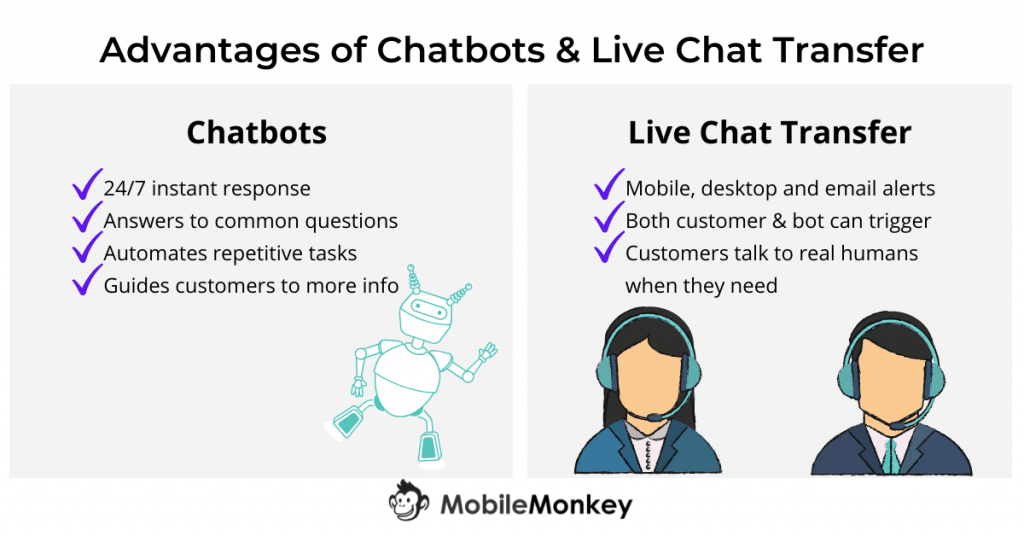
Image by Mobilemonkey
Originally published Feb 02, 2021, updated Jan 17, 2023
